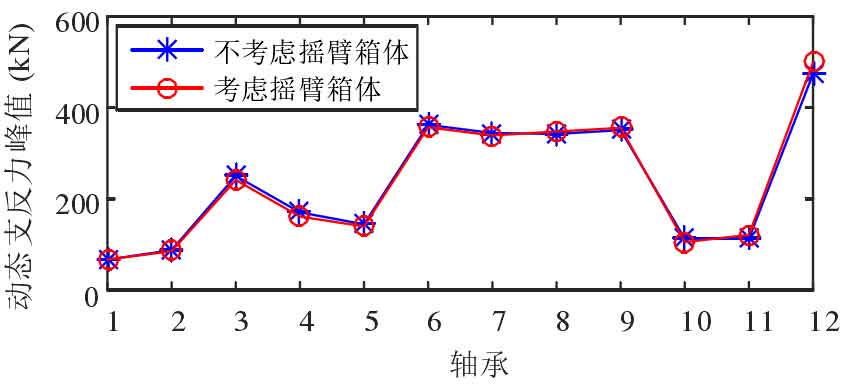Fig. 1 (a) and (c) respectively show the dynamic reaction curve of the front and rear bearing 1 of the coupling rocker box. The peak value of the dynamic reaction before the coupling rocker box is 66.51 kn, and the peak value of the dynamic reaction after the coupling box is 66.85 kn. The absolute error is 0.34 kn and the relative error is 0.51%. In order to avoid the contingency of the peak value of dynamic reaction force, the 90th percentile of Figure 1 (a) and figure 1 (c) are calculated, which are 42.77 kn and 41.53 kn respectively. The absolute error is – 1.95 kn and the relative error is – 2.99%. Figure 1 (b) and figure 1 (d) show the spectrum of the dynamic reaction force of the front and rear bearing 1 of the coupling rocker arm housing. After coupling the rocker arm housing, a new frequency component appears in the dynamic reaction force of bearing 1, which is the inertial force generated by the translation of shaft 1 and gear 1 involved in the deformation of rocker arm housing. It should be pointed out that the peak value of the dynamic reaction force of the bearing 1 is slightly less than 1 / 2 of the peak value of the dynamic engagement force of the gear pair 1. This is because the installation position of the gear 1 is closer to the bearing 2 (rather than the midpoint of the bearing 1 and the bearing 2), which also verifies the correctness of the coupling model of the cutting part from the side.

(b) Frequency domain (without considering rocker box)

(d) Frequency domain (considering rocker box)
Fig. 2 (a) and (c) respectively show the dynamic support reaction curve of the front and rear bearing 12 (supporting roller) of the coupling rocker box. The peak value of the dynamic support reaction in front of the coupling rocker box is 474.49 kn, and the peak value of the dynamic support reaction in back of the coupling rocker box is 499.74 kn. The absolute error is 25.25 kn, and the relative error is 5.05%. Figure 2 (b) and Figure 2 (d) show the spectrum of the dynamic reaction force of the front and rear bearing 12 of the coupling box. The main frequency component of the dynamic reaction force of the front bearing 12 of the coupling rocker box is the external excitation (drum load fluctuation caused by uneven coal and rock). A new frequency component is added to the dynamic reaction force of the rear bearing 12 of the coupling rocker box, which is the inertial force generated by the deformation of the rocker box and the translation of the drum. The frequency spectrum of the dynamic reaction force of bearing 12 is much more obvious than that of bearing 1, because the inertia of the roller is relatively large, and the roller is located at the free end of the “rocker arm”, so the involved motion is more obvious.

Figure 3 shows the variation of the peak reaction force of each bearing before and after the coupling rocker box. It can be seen that the peak value of bearing reaction force may increase or decrease after coupling the rocker arm housing, which is related to the specific position of the bearing in the rocker arm housing. However, from a quantitative point of view, the peak value of the reaction force of each bearing before and after the coupling rocker arm box is not obvious under the rated working condition.


